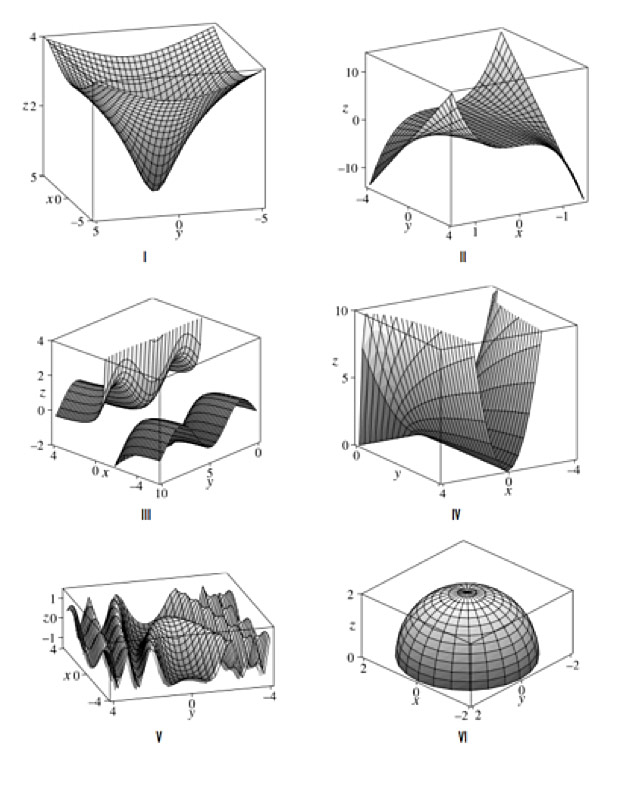9.6 - Staying Cool
Let $T(x,y)$ be the temperature in a 10 ft by 10 ft room on a winter night. One coreer of the room is at (0,0) and the opposite corner is at (10,10). For each of the following functions, $T(x,y)$,
- Draw, or describe in words, or plot with GeoGebra a graph of the temperature function. Useful prototype commands in GeoGebra: (This should plot one quadrant of a sphere)
function(sqrt(81-x^(2)-y^(2)), 0, 10, 0, 10)
z=4
The last four numbers are the $x$-range to plot, $0\lt x\lt 10$, and then the $y$-range to plot, also 0 to 10. The command z=4 will display the plane perpendicular to $\uv z$ at a height of $z=4$. This lets you easily see what part of the surface is above 4 and what part is below 4. <>Now, for each of the Temperature functions, $T(x,y)$ for this 10 by 10 foot room, plot $z=T(x,y)$. Use your plot to answer these questions:
- Describe the likely floor locations of the heating vents. Sketch the locations on a 10 by 10 square.
- Suppose you like to sleep with a temperature of 70${}^o$ or less. Where would you put your bed? Again, sketch locations on a square.
- $T(x,y)=78-\frac{1}{10}\left[ x^2+(y-5)^2 \right]$
- $T(x,y)=\frac12x-y+75$
9.6 - The matching game
Match each function with its graph. Give reasons for your choices.
| 1) $f(x,y)=\frac{1}{x+1}+\sin y$.
the fraction blows up as $x\to-1$. Otherwise, if $x=k$, then $z\propto C+\sin(y)$.
|
2) $f(x,y)=\sqrt{4-x^2-y^2}$
Horizontal traces ($z=k$) are circles. Impossible for $z$ to be greater than $\sqrt 4=2$. |
3) $f(x,y)= \cos(x+y^2)$
If $y^2=k$, then $z\propto \cos(x+k)$. Also, the $\cos(\text{ })$ function never gets above 1 or below -1, so $-1< z < +1$ as well. |
| 4) $f(x,y)=\ln(x^2+y^2+1)$
Lowest possible value occurs when $x=y=0$: $f(0,0)=\ln 1=0$.
Horizontal traces are circles. |
5) $f(x,y)=x^2\sqrt y$
If $y=k$, $z\propto x^2$. If $x=k$, $z\propto \sqrt y$. Undefined for $y\lt 0$. |
6) $f(x,y)=x^3y$
When $y=k$, $z\propto x^3$. When $x=k$, $z=\propto x$. |
